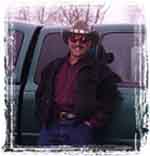It’s one of the basic principles of evo devo: as an embryo morphs from just a few cells into a fully formed creature, it shows echoes of ancestral traits, bumping up against evolution along the way. Chicken embryos, for one, start off looking fairly generic, much like the fishy ancestor they share with humans and other vertebrate creatures (it was in the fish that nature first learned how to lay down a backbone, Carroll says). As the embryo continues to transform, there’s a brief window when, according to Larsson, it takes on “dinosaurian traits.” For a mere 10 hours, the chicken embryo sprouts five fingers with pointed and clawlike tips, a hint of teeth, and a tail (up to 22 vertebrae, roughly 15 more than in a developed chicken). Suddenly, a genetic switch flips: the teeth disappear, the tail is destroyed, and the five fingers become three. It looks much more like a bird.
Why would an embryo build extra fingers, teeth or a tail, only to have them disintegrate? Evolutionary change is “like tuning a car while the engine’s running,” Carroll says. “You can’t just junk one part and put something else in; in the meantime, it wouldn’t work. Those pre-existing programs are often the foundation for something new.” For Larsson, the trick will be to override them. ...
If his efforts succeed, what will Hans Larsson have created? “Within five years, I think we could get a chicken with a tail, forearms, and teeth, and transform its feathers back to their ancestral shape, which is probably a hollow quill,” he says. It would be slightly larger than a standard chicken, although using another bird species (say, an emu) or treating it with growth hormones could produce different results. It would still have a chicken genome, and so wouldn’t technically be a T. rex or a velociraptor; but it wouldn’t be a chicken, either, at least not as we’d recognize it. So what, exactly, would it be?
“It would be a dinosaur,” Larsson says, “because chickens are dinosaurs.”
It turns out that some of my scientific suppositions in Little Birdies! track nicely with Professor Horner's concept that the dinosaurs are still among us, just napping comfortably somewhere in the depths of modern-day avian DNA.
Read the entire article here: The quest to build a dinosaur.







No comments:
Post a Comment